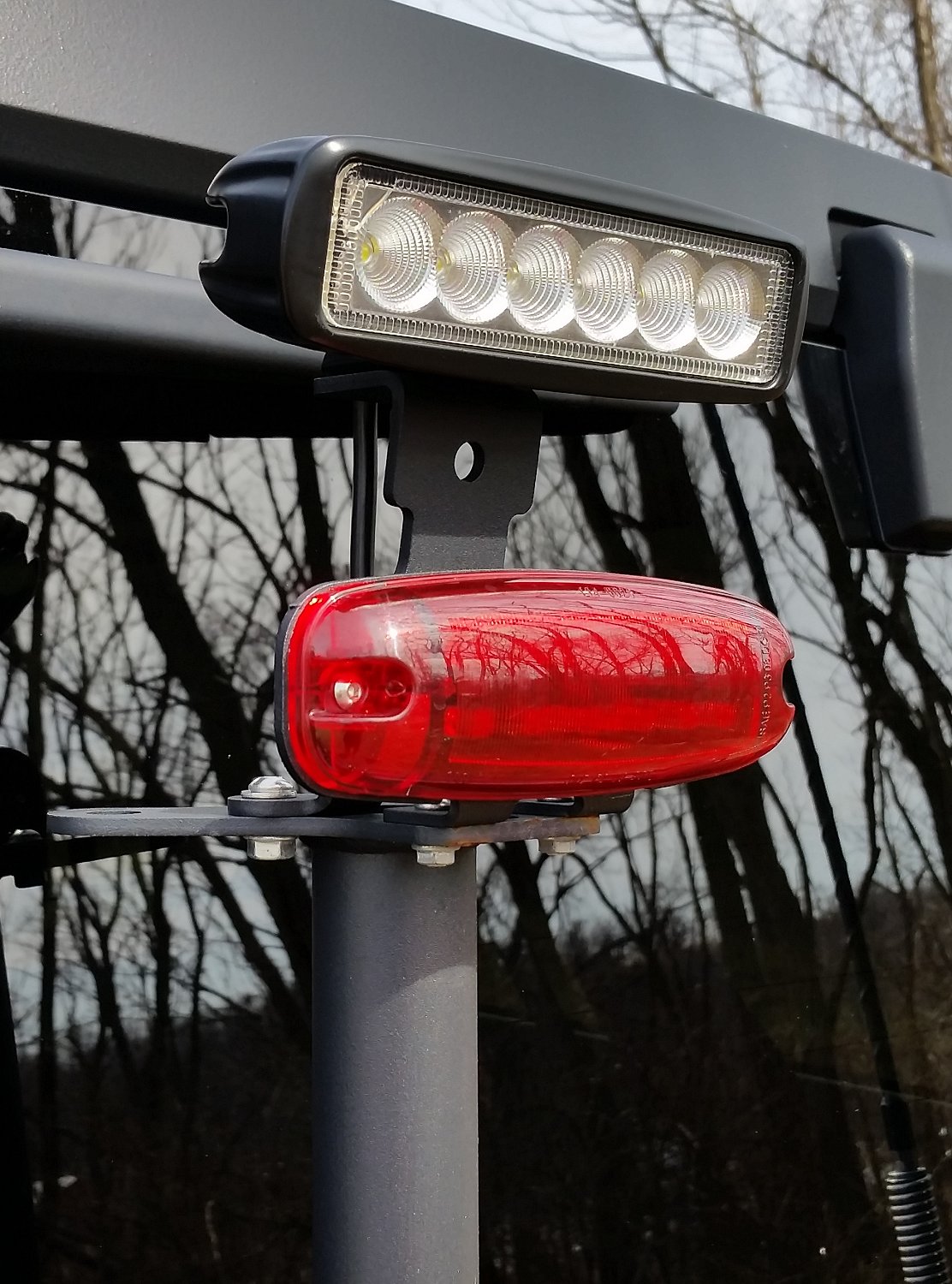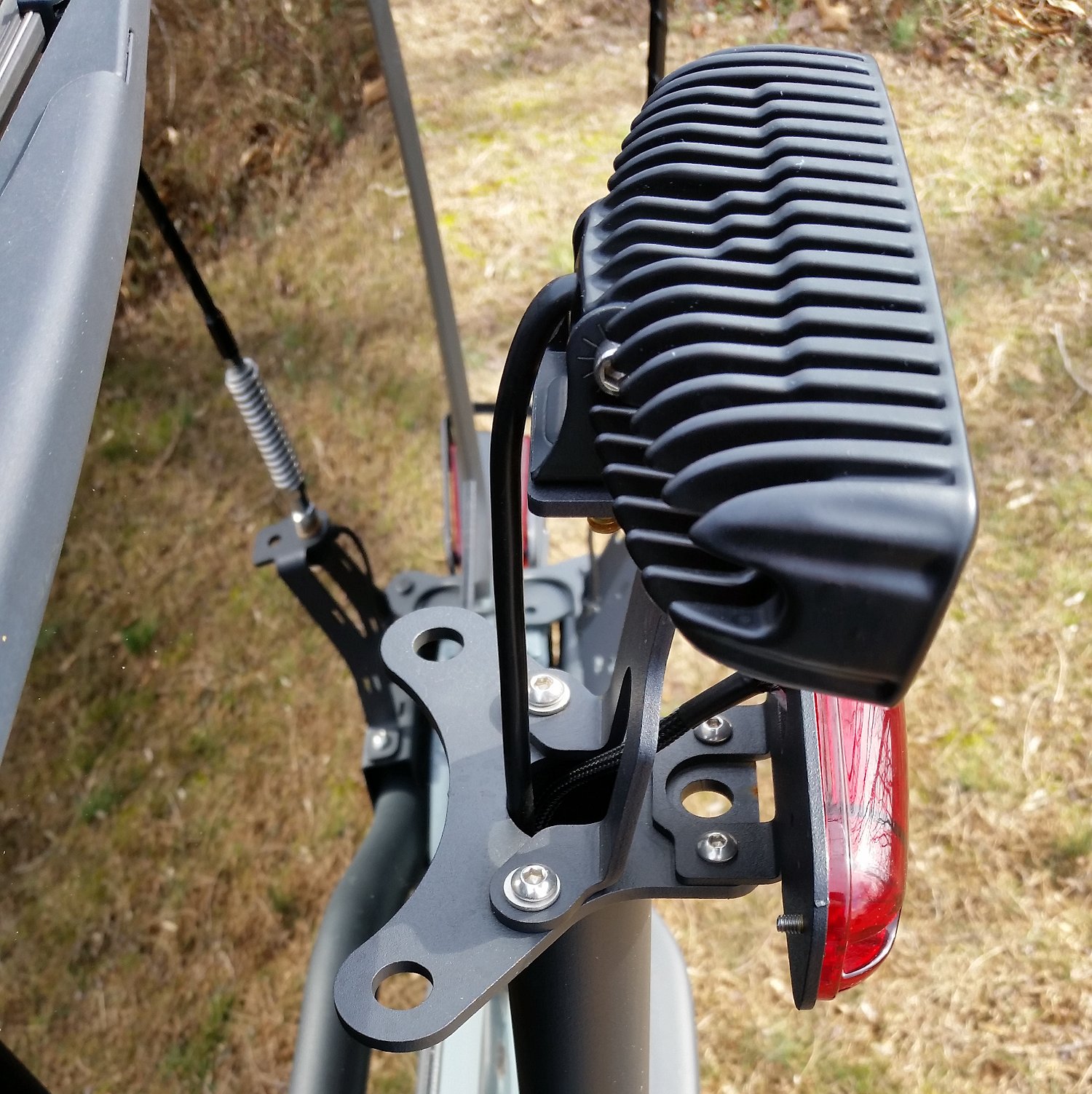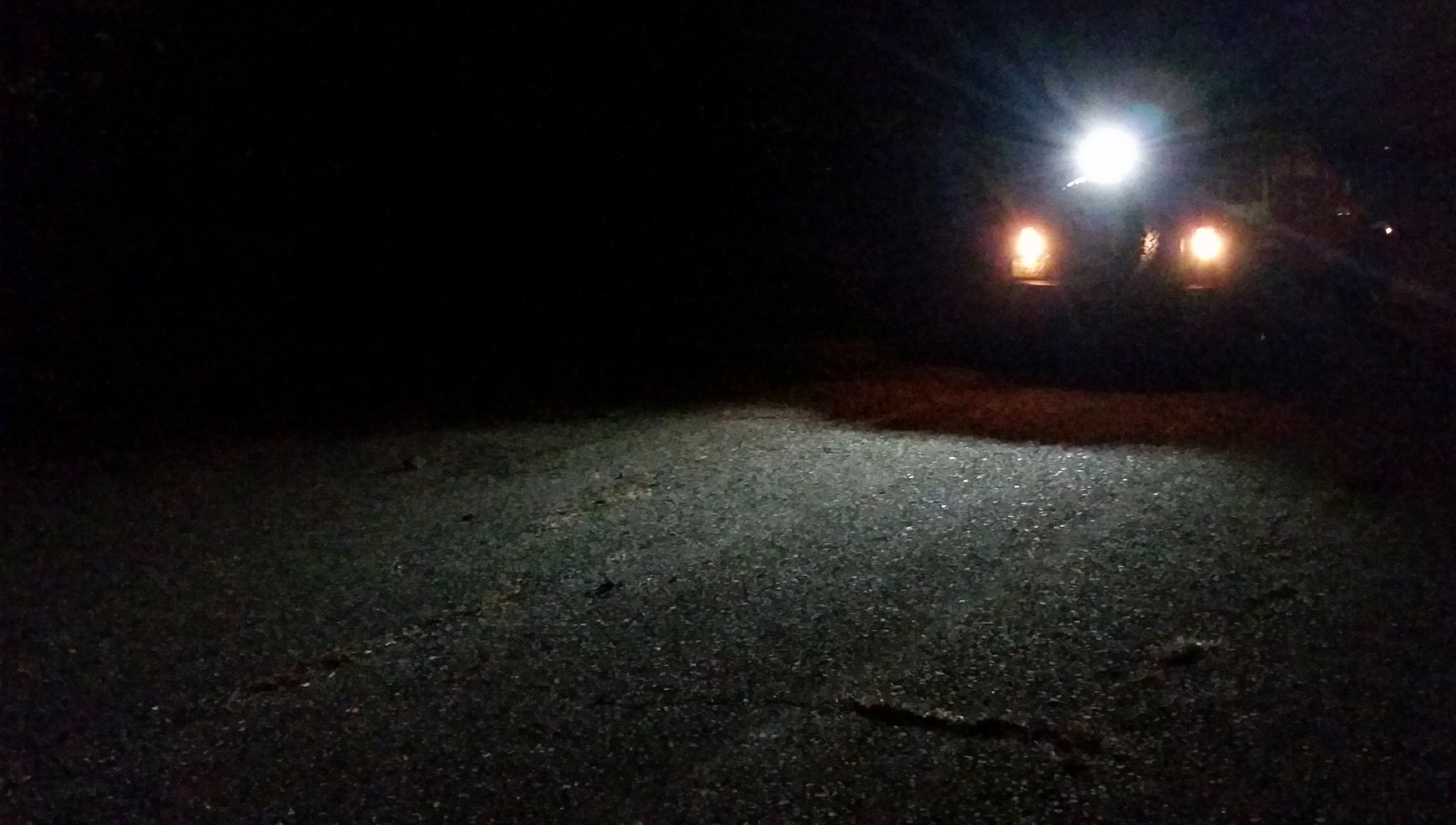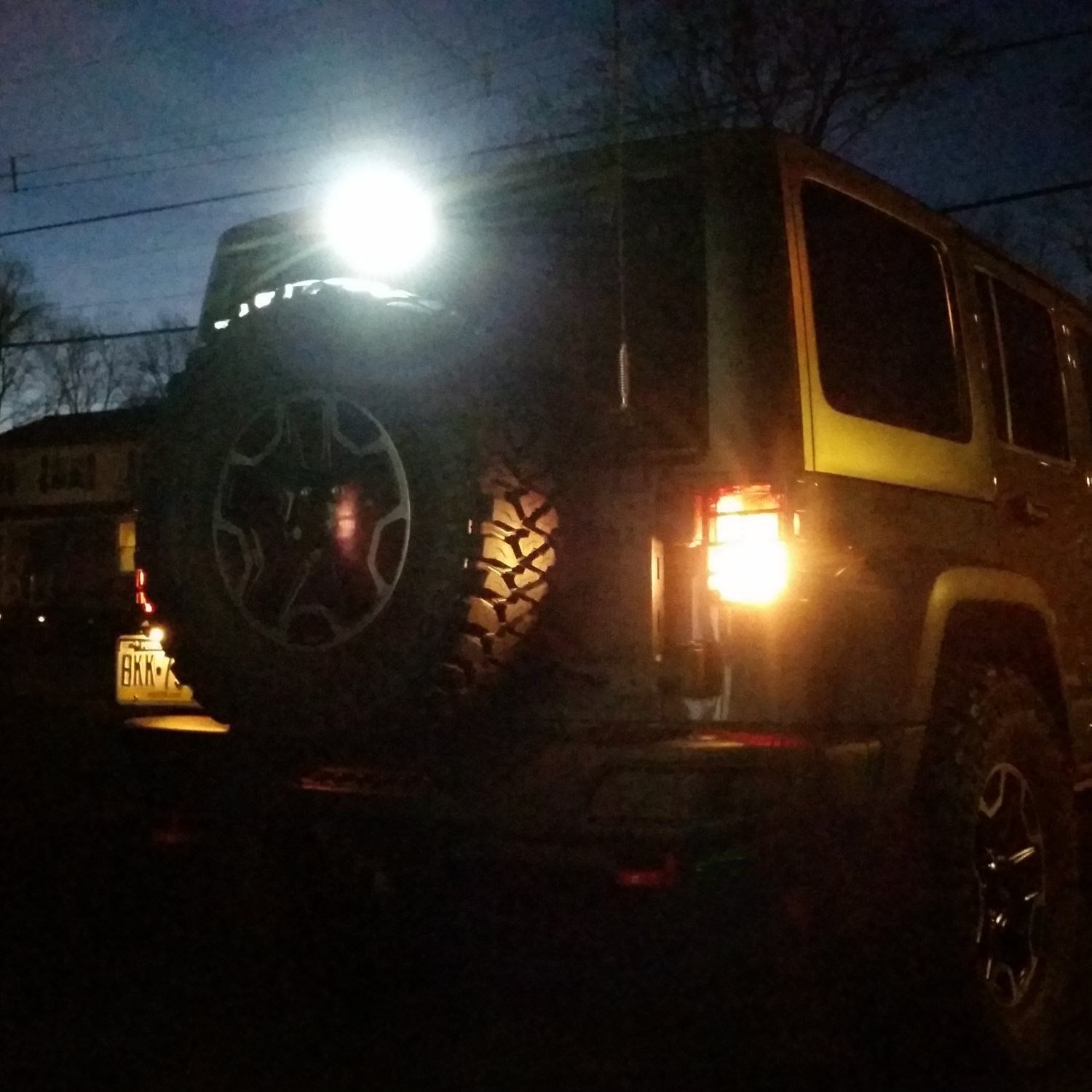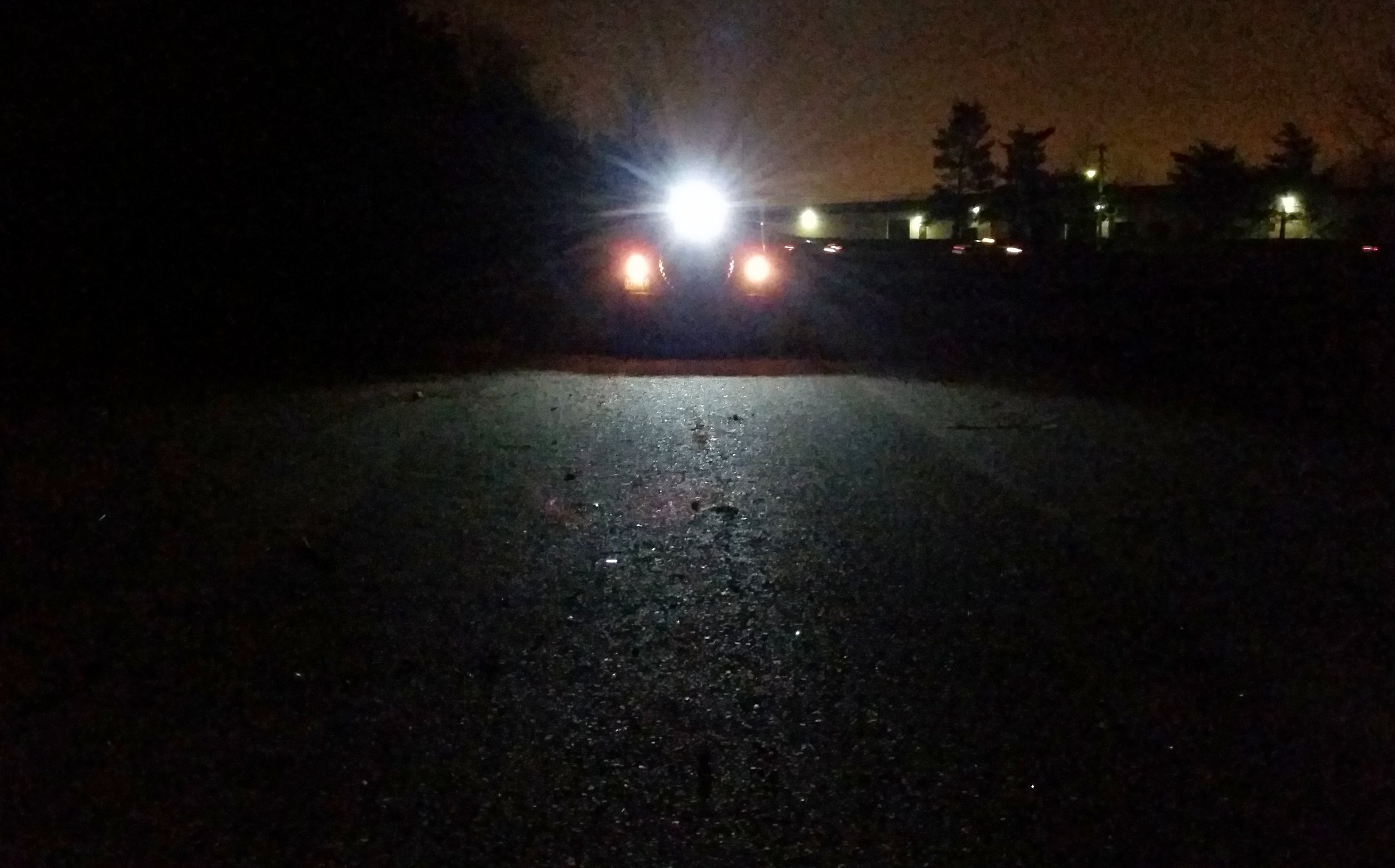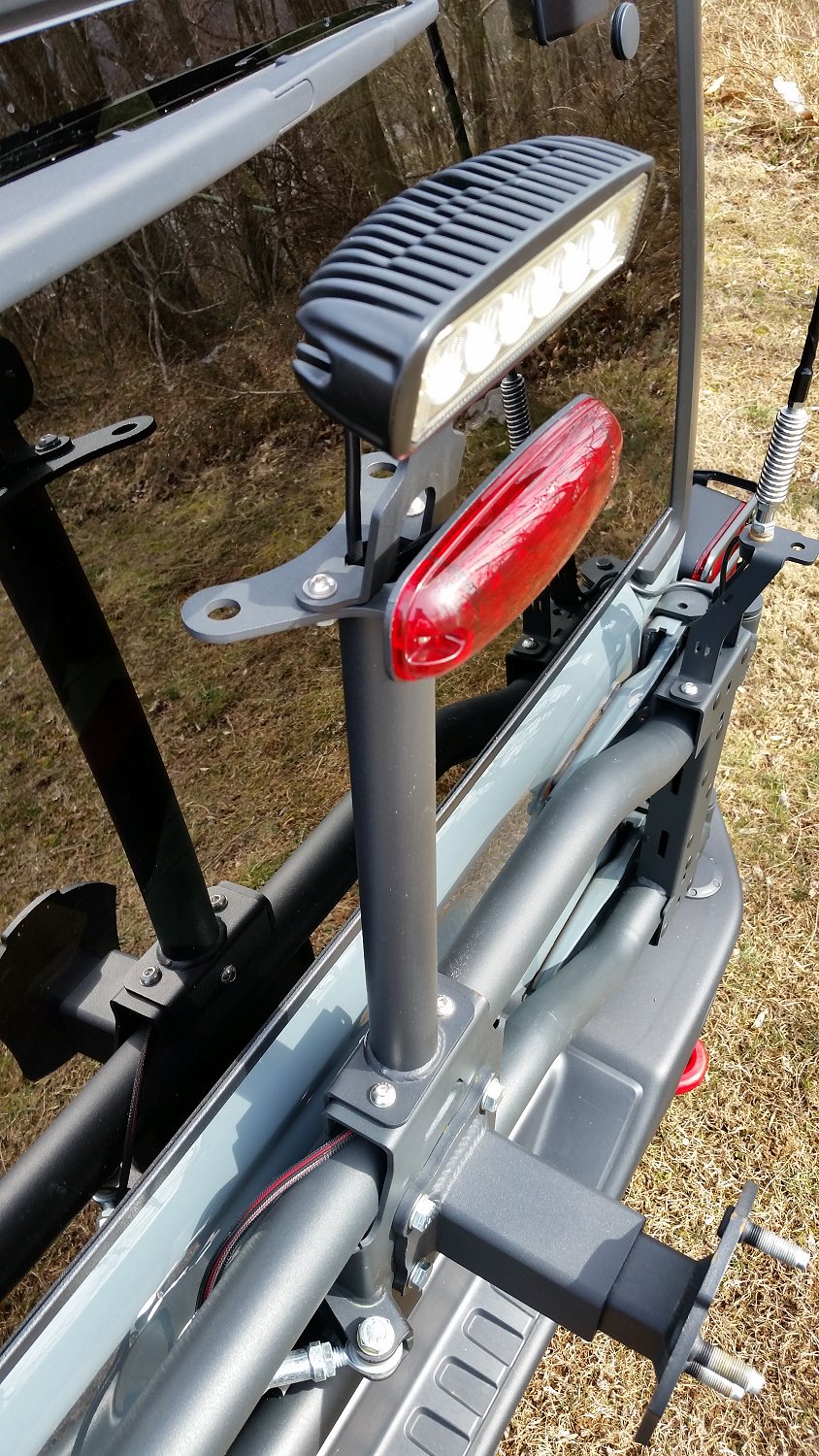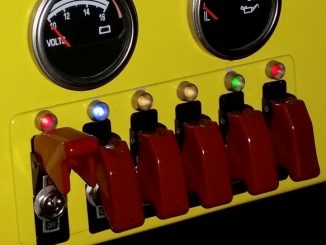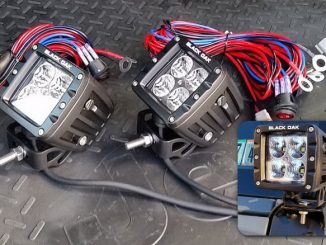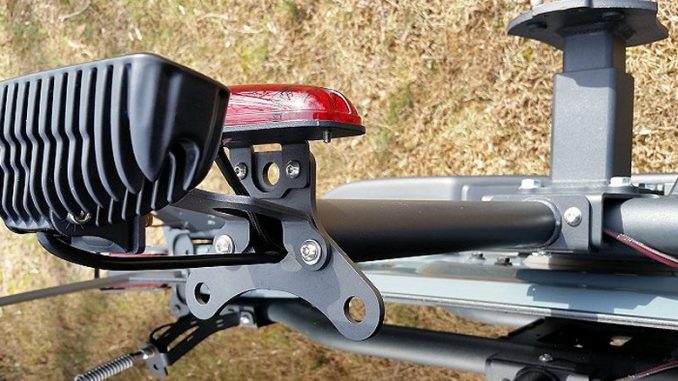
Allow me to shed some light. A lot of decisions are based on past experience. This install starts with one of those experiences from probably 15+ years ago. That night on the trails was overcast, dark and chilly with no stars, no moon to help us see. Our destination was a small dead end clearing well above the river, a perfect place to stop, have a few beers and laughs next to the campfire, listening to the sound of the rapids below.
Pulling into the small dead end clearing is tight. Not much room to turn around. Lots of small trees backed up against the cliff wall on the one side, a drop off on the river side. The clearing itself is a big flat rock and the only reason it had not grown over with trees making it a great spot for the campfire. Years ago someone cut a trail up to it and it has been maintained ever since. During the day, it’s a really cool place to hang out, have a few beers, throw rocks into the river about 25 feet below. At night though you have to know where you are in relation to the cliff so you don’t drop over the edge onto the rocks below.
That night as we all headed up to the clearing in 4 vehicles, I was the last to pull in and due to the tight clearances, I had to swing the Jeep around backing towards the cliff. I’ve done it before, no big deal. What I didn’t have was a backup light, relying only on my reverse lights. I pull forward tucking the front of the Jeep under a massive rhododendron in front of me.
I got out and had walked over to the edge with a flashlight in hand. It was about then that I that I saw it. My Super Swamper tire tracks in the muddy moss covered edge of that cliff. The big, gnarly lugs of that mud tire had actually started going over the edge before I pulled forward. I had no idea. I didn’t even feel it dipping over towards the rocks below. In that moment I felt like I had ice running through my veins as I realized I couldn’t see well enough to have known how close I was. That could have been it right there. I never forgot that moment. Every vehicles since that day I’ve installed some sort of backup light wired to the reverse lights. There’s plenty of good reasons to install backup lights. This is my motivation.
Up until recently whenever I wanted to install lights, I’d install a relay and run a 12 volt wire back to the lights to carry the 55 watts for the halogen light. Now we have the luxury of LED lighting that uses a fraction of power that older lights used. Plus they are many times brighter. In this article, I’ll walk you though the installation of the Maximus-3 LED Backup Light that I have mounted on the top of my Maximus-3 Rear Sport Tire Carrier’s Mast.
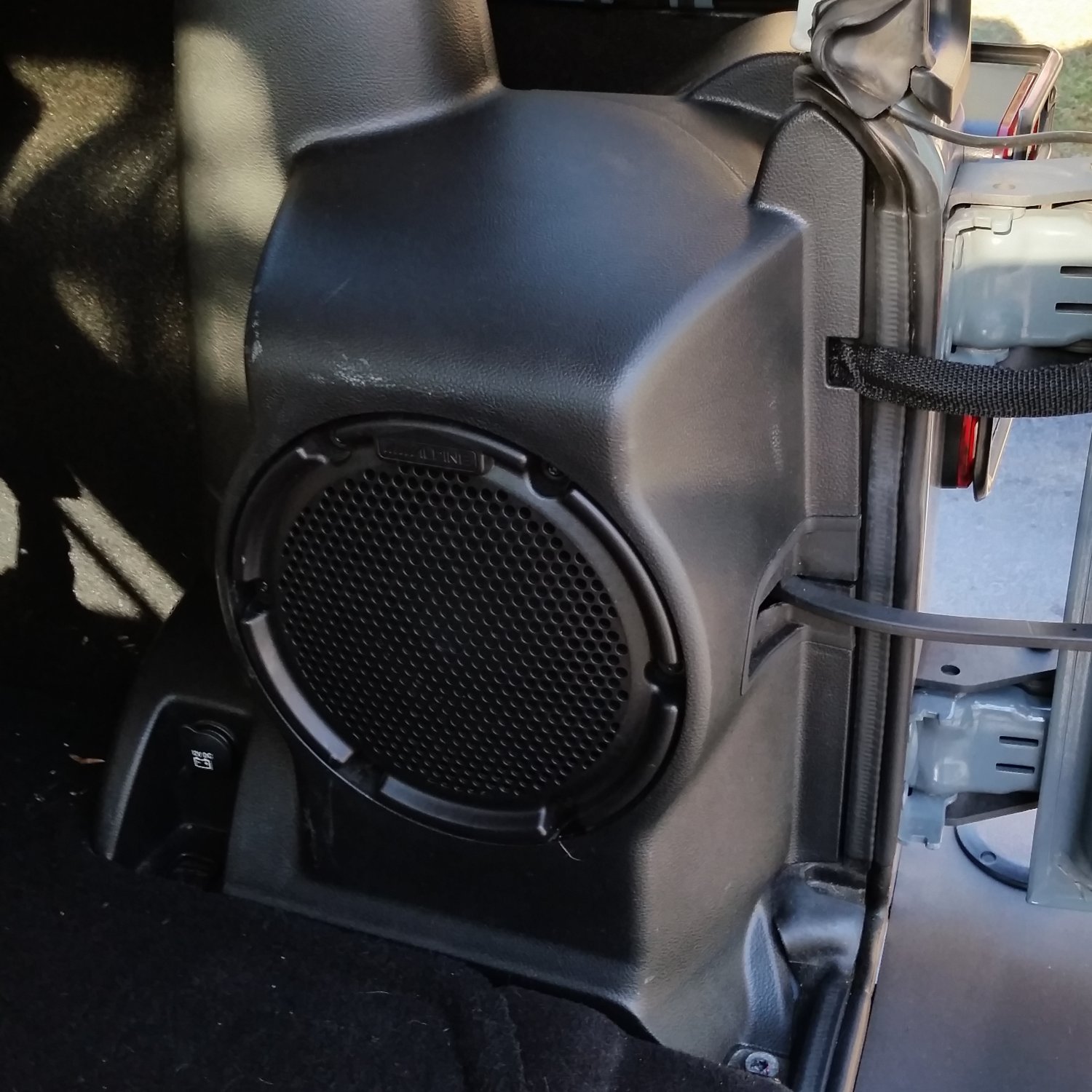
We need to access the tail light wiring harness located in the corner under the carpet, behind the rollbar. Our Subwoofer is in the way so we have to remove it. Other JK configurations may have an exposed carpet and you only need to look under the carpet.
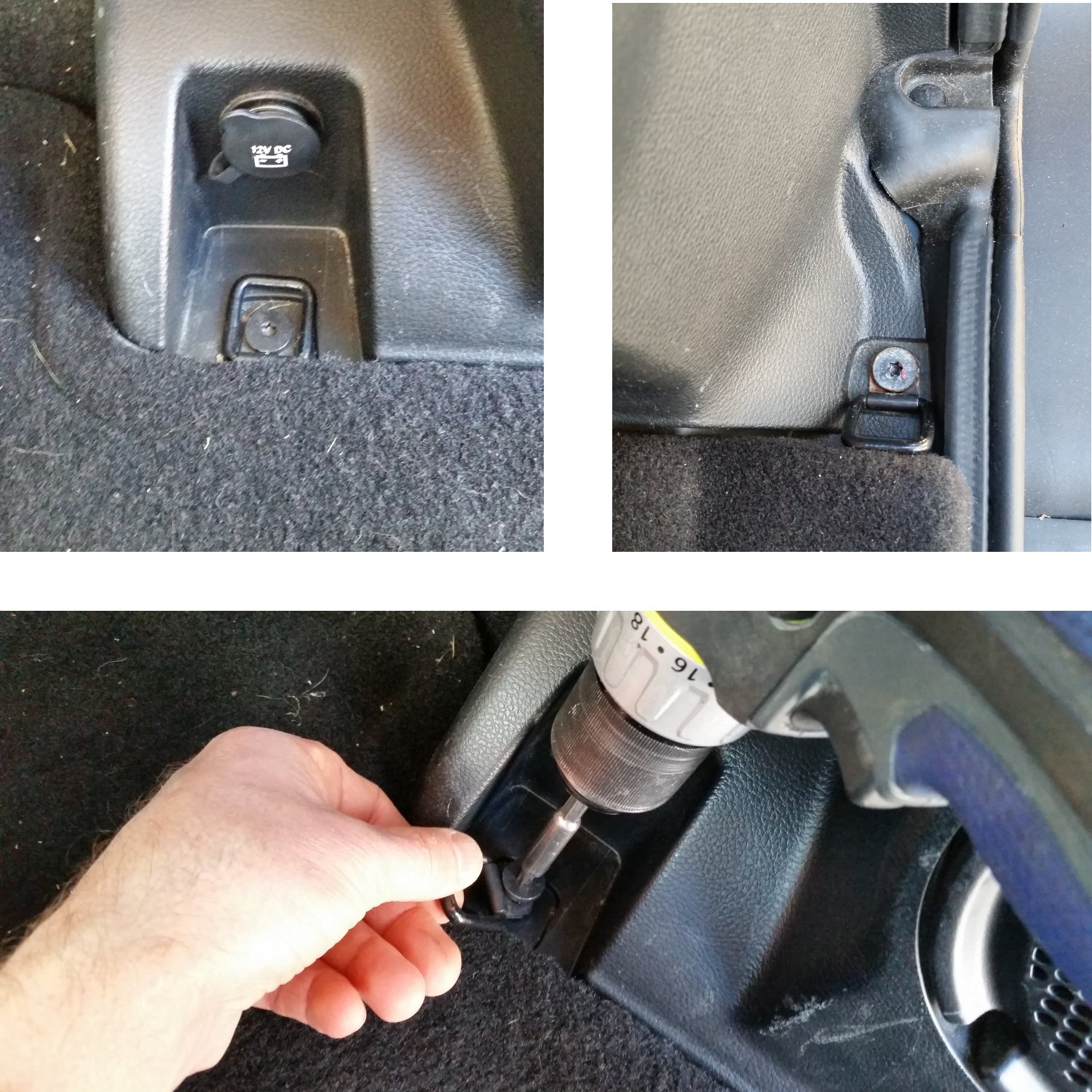
The Subwoofer is held in place in three locations, two T-30 Torx screws on the floor and one 10mm nut located behind the rollbar.
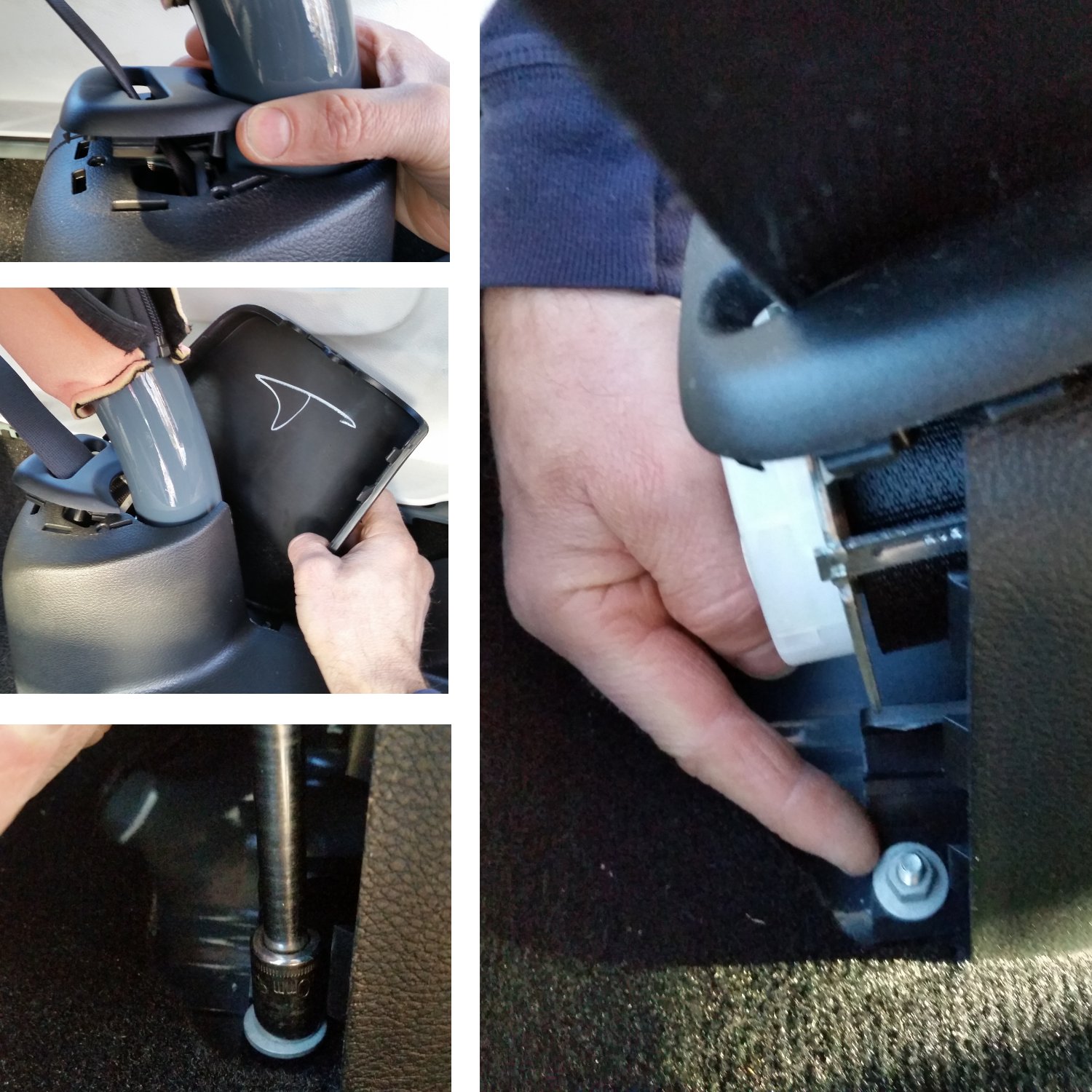
To get to the 10mm nut, we need to remove some plastic. So pop up the seat belt retainer guide and remove the outer window-side plastic panel. Then you will find the 10mm nut holding the top side of the sub woofer down.
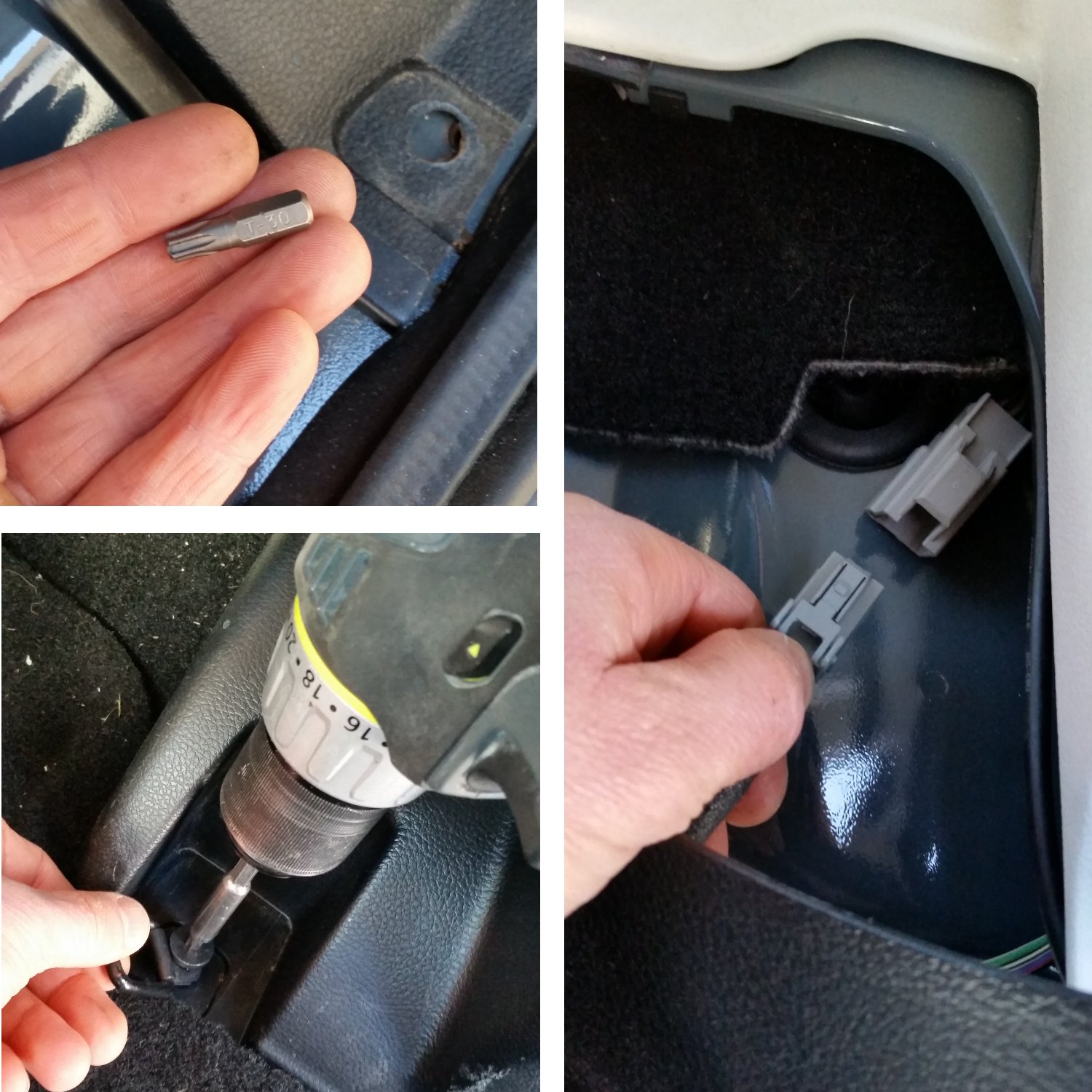
Once the sub woofer screws and nut are removed, locate the speaker plug and disconnect. Set the subwoofer aside.
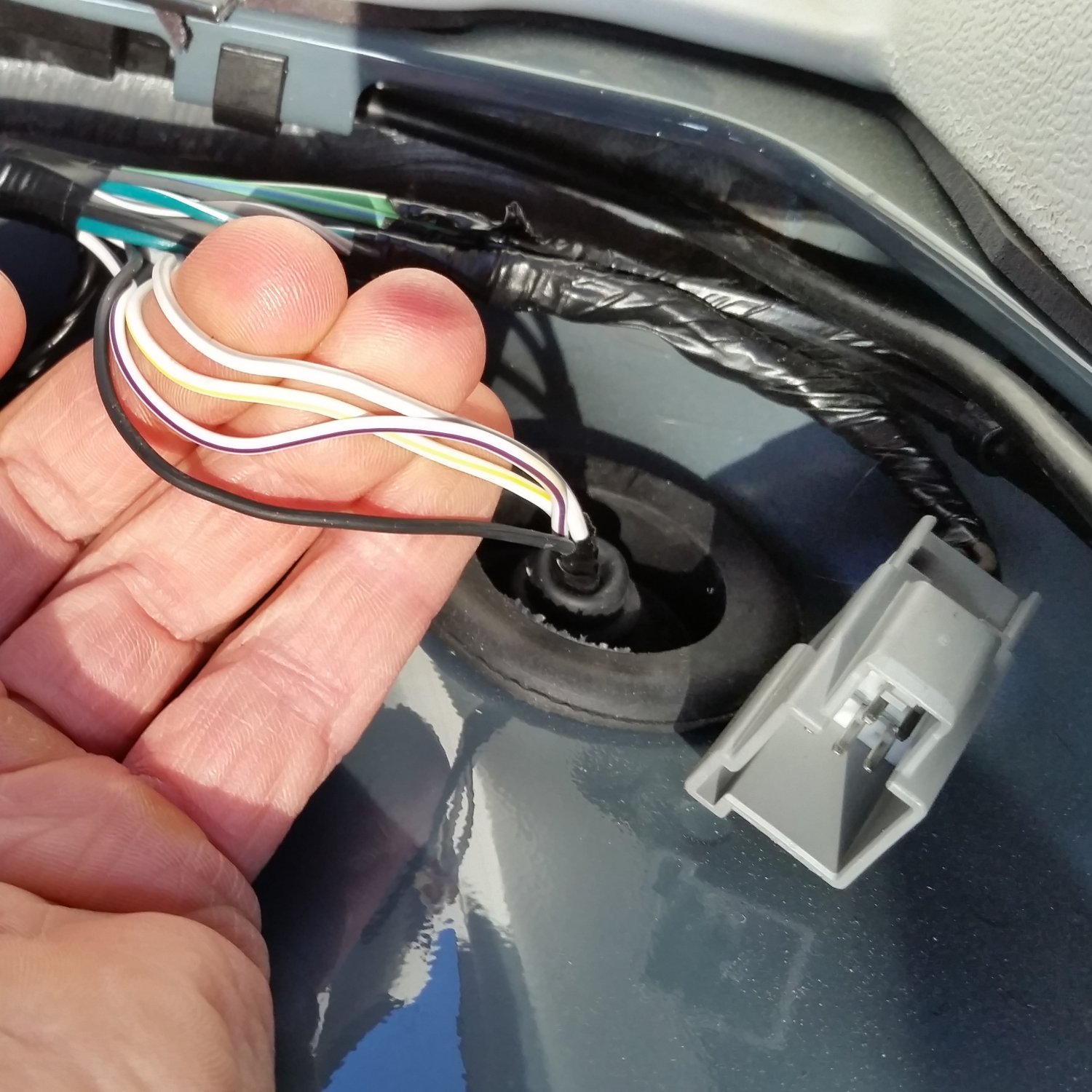
Peal back the corner of the carpet and locate the tail light wiring harness. You should see four wiring going down into the fender well. White-Purple, White-Gray, White-Yellow, and Black. The two wires we are concerned with are White-Gray and Black. Black is ground, White-Gray is the reverse light circuit. I’d recommend double-checking the colored wire before cutting into it. I used a pin to tap into the wire and verify that I had 12 volt when the Jeep is put into reverse. You don’t want to tap into the brake light circuit or your reverse LED will come on every time you hit the brakes!
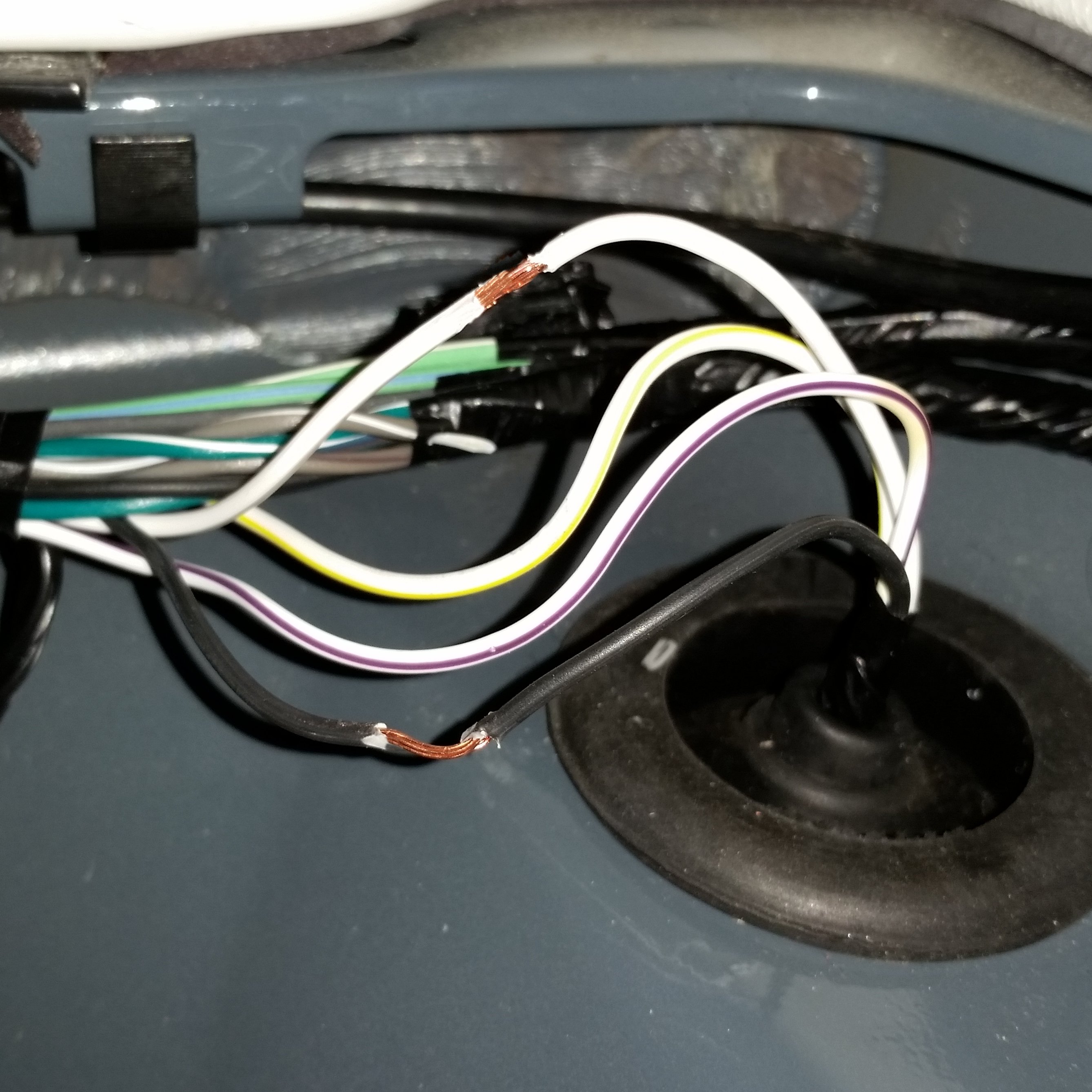
Once you’ve identified the reverse circuit now we will be tapping into this circuit for our LED reverse light. When tapping into circuits, I like to preserve the integrity of the stock wire so rather than cutting and splicing in, I strip back a small segment of insulation and solder my wire into the stock wire. Here you can see the insulation stripped back. I also avoid using T-Taps mainly because I’ve had some cut into some of the wire conductors strands rather than guide them into the T-Tap.
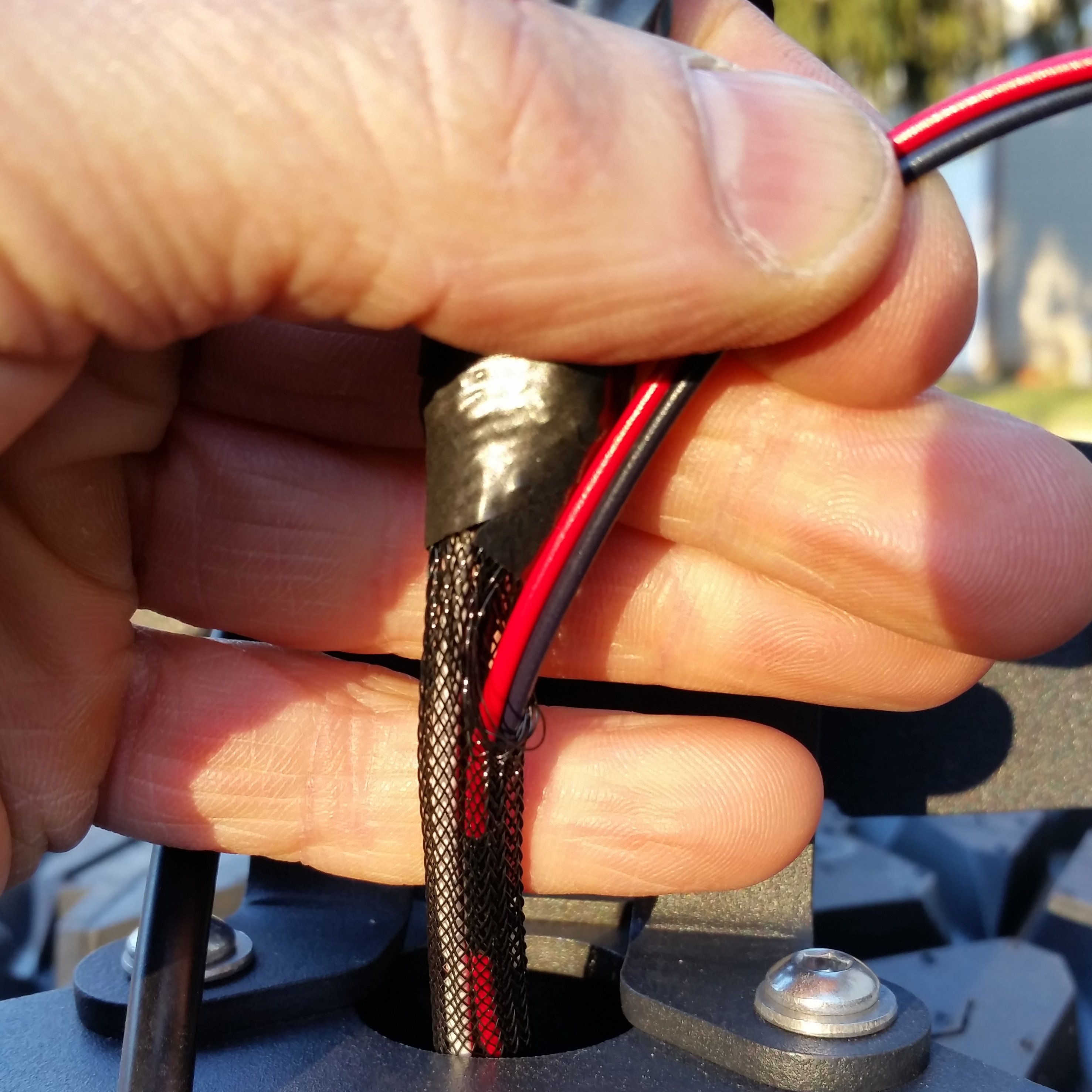
Starting back at the LED Light up on the mast, I fed two 20 gauge wires, a black and red, through the taillight harness, through the door’s grommet, and followed the wire harness all the way back to the reverse light wire harness inside the vehicle.
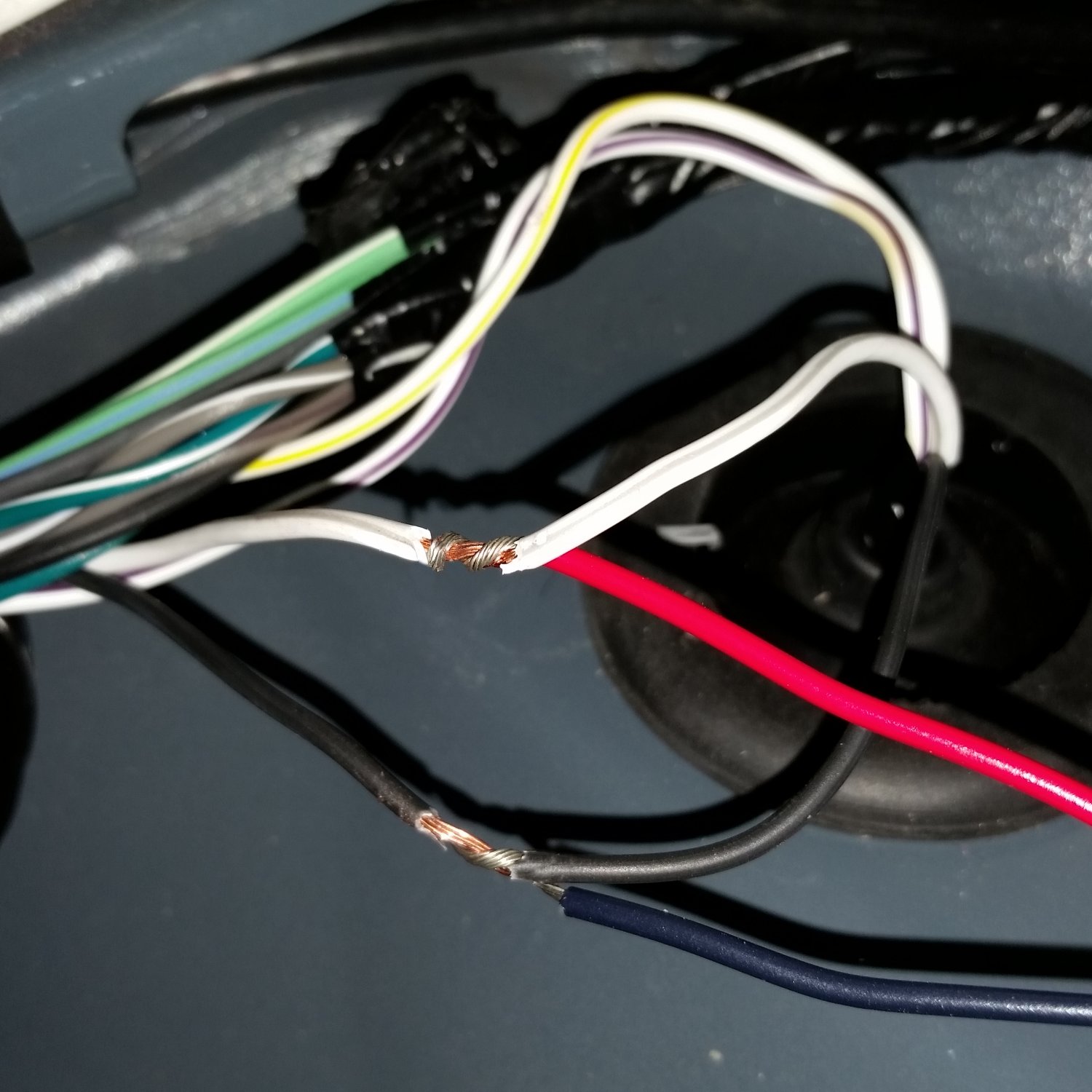
When I splice into an existing wire, I’ll sometimes strip back the insulation, twist the new wire around the existing wire, then solder the new wire in place. In the past I’ve been tempted to do a quick wiring job just to get it done. Often those quick jobs become problems thanks to my shortcuts. Now I very often solder my wires in the vehicle when I want to make the connection permanent.
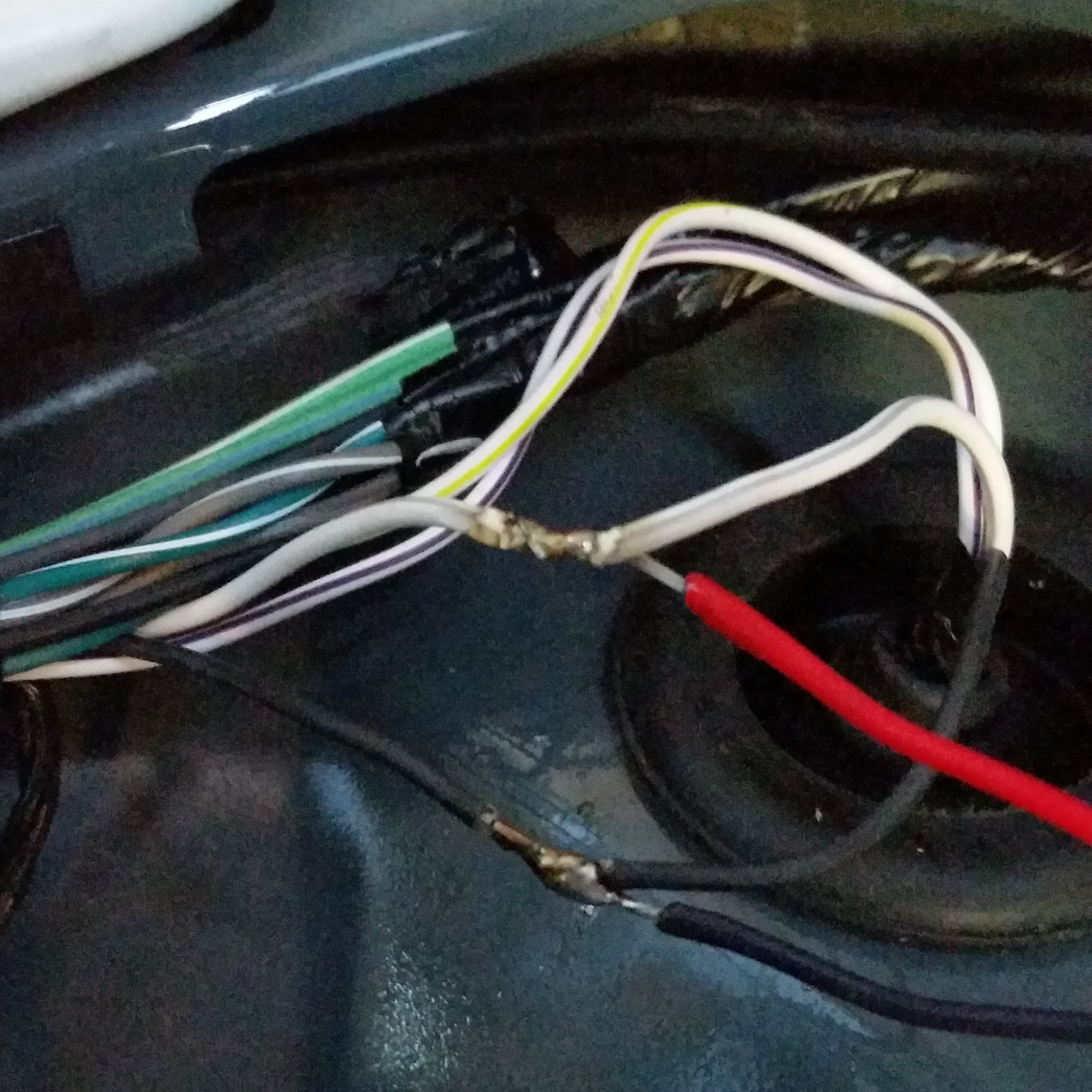
My method is to use a little soldering flux paste on the connection, then use a micro blow torch and flux core solder to make the connection. Then each wire is wrapped with electrical tape and/or shrink tubing. Then I never have to worry about the connection again.
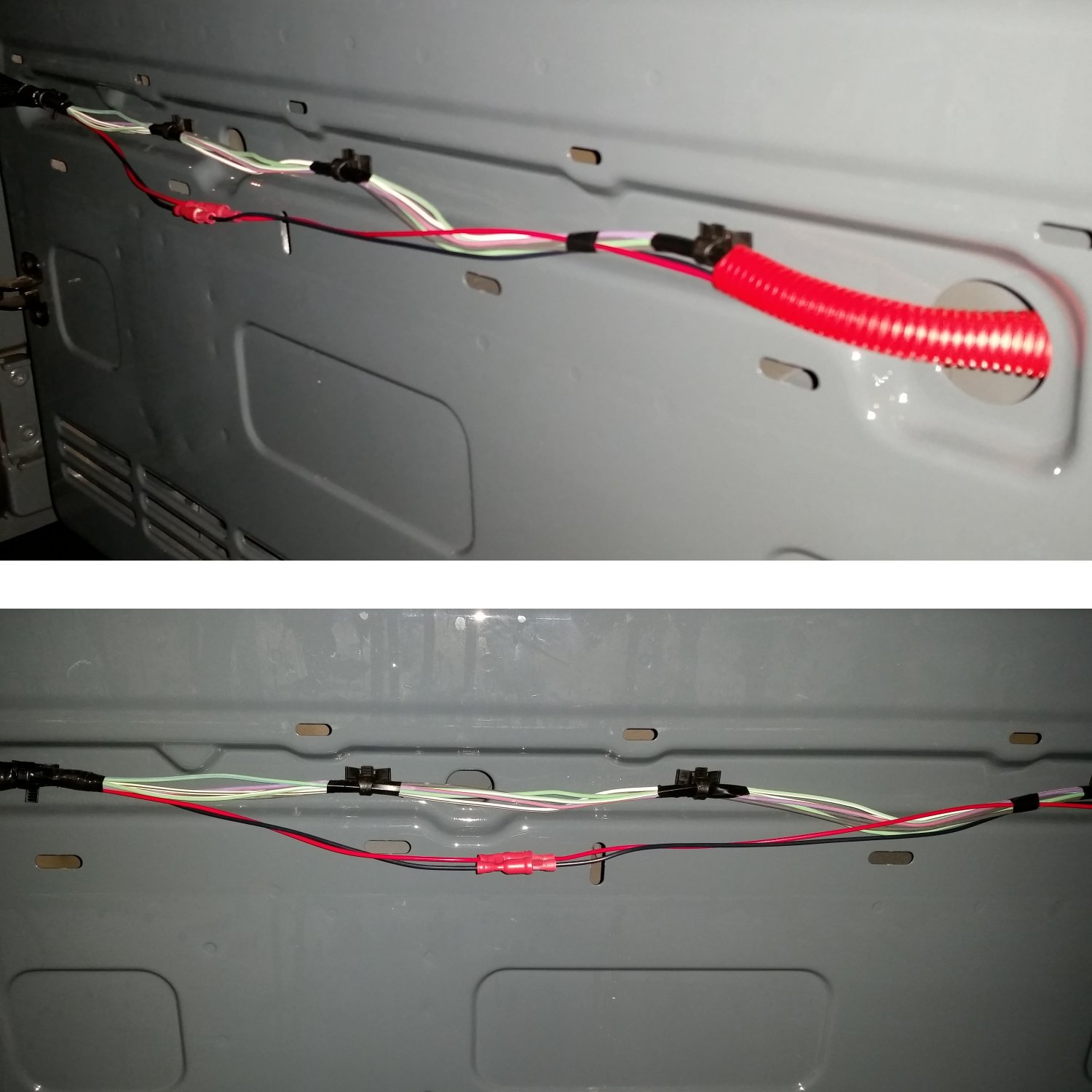
In the center behind the plastic wire cover I added a couple of disconnects just in case I ever needed to disconnect the light. Cover then put back on of course.
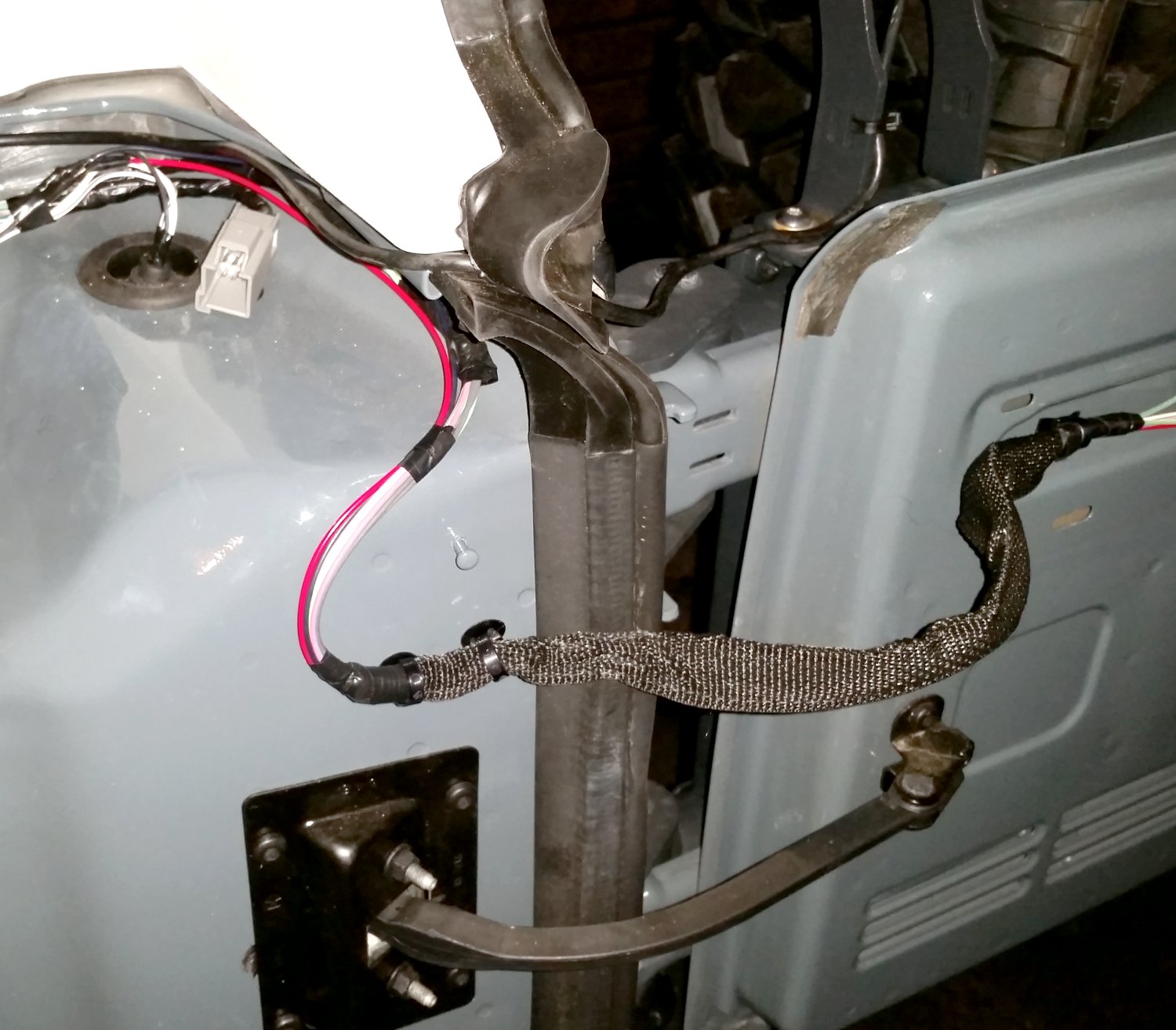
I also ran these two red and black LED reverse light conductors through the nylon wire protector at the door hinge. To get it in the nylon protector, you’ll probably have to take some tape off and open up some zip strap tie downs. A small pocket knife works good to pop them open without destroying the zip tie.
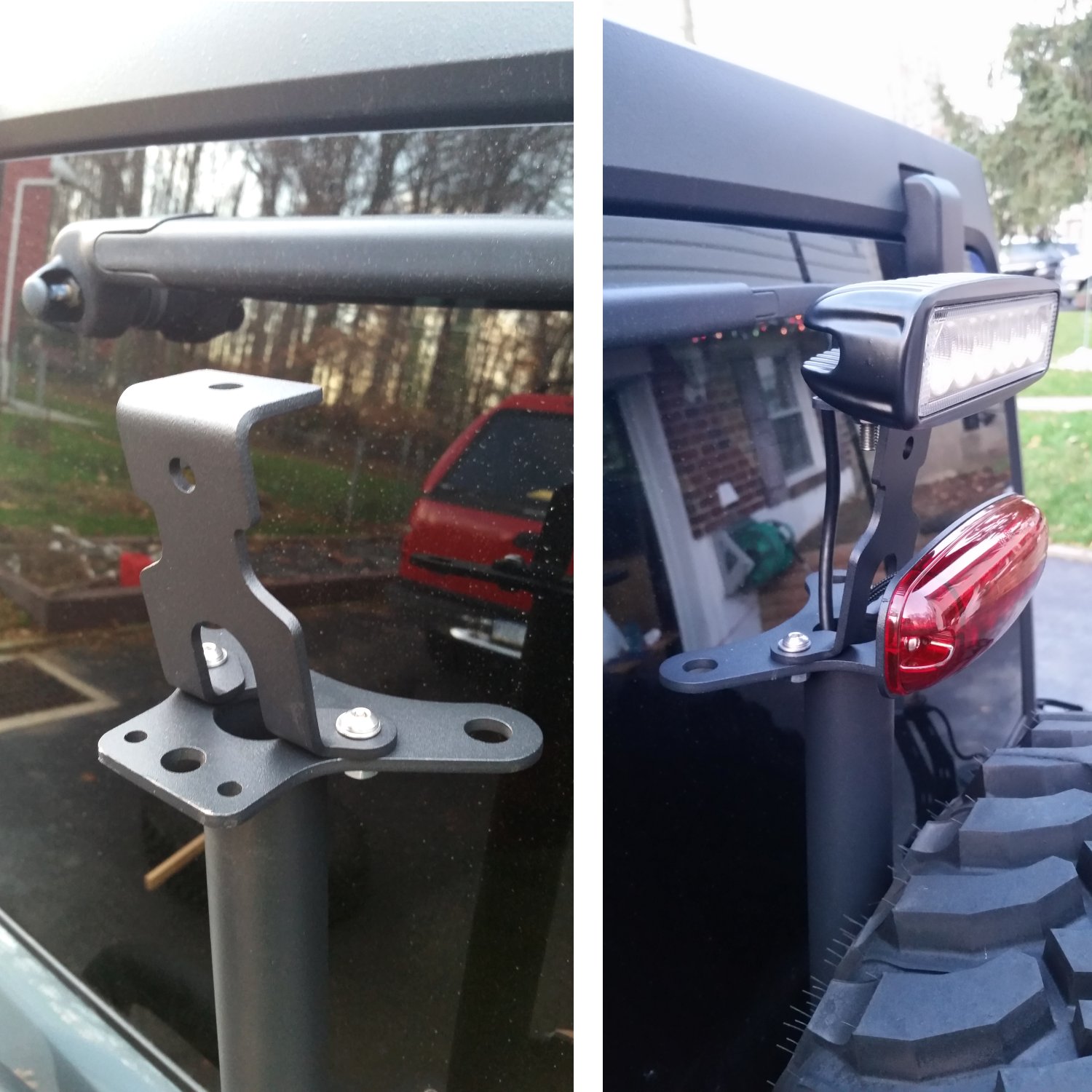
Install the Maximus-3 Precision Engineered Bracket specifically designed to mount to the top of the Mast then install the Backup LED Light atop the bracket. We then wired the LED light to the red and black wires using a pair of Butt Splice Connectors, wrapped them in electrical tape and lowered the wire into the mast tube.
Test & Adjust
Now the only thing left is to test your wiring! If it all looks good, put the sub woofer back in, secure the plastic panel and seat belt guide, and your done! I took my Jeep out to a parking lot to find the best adjustment of the LED light to get a good field of focus when backing up. It’s a great mod for the trail but just as if not more useful in the urban jungle where kids, shopping carts and trashcans lurk in the shadows!
Post Install Impressions if the Maximus-3 Backup LED Light
After installing the LED I took the Jeep to a local abandoned parking lot to see how much of a spread of light the LED projected. Pulling a mere 13 watts, these LED lights sold by Maximus-3 put out an amazing amount of light. It was hard to capture just how far the flood of light projected but it was far enough to say it was throwing light on trees at the back of the lot 150 feet away! Most of the light was focus down around the back of the vehicle, where I wanted it mainly because that is the immediate area where I’m about to back up into. The huge benefit of this install is that you don’t have to think about putting the light on. It just comes on when the vehicle is put into reverse. Power consumption is low enough that there is no strain on the existing reverse light circuit in the Jeep and the existing fuse can handle the additional 13 watts without any issues. This is a highly recommended modification for anyone, on any vehicle whether it’s a Jeep or not. The additional nighttime visibility gained by one of these LED lights is significant improving your safety. Having the Maximus-3 Tire Carrier’s mast ready to be equipped with an LED makes it a no brainer for our Project X.

